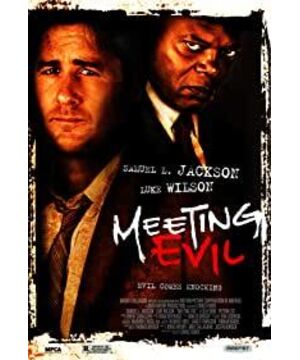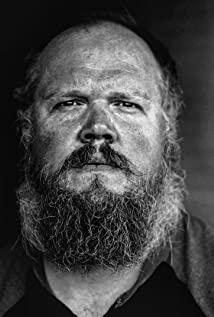I have to say that the director's shooting technique is very subtle, and it is not easy to understand. At the beginning of the film, the protagonist already knew about the wife's affair with the swimming pool repairer. In the scene, the protagonist tangled on the shovel, watching that it was not a newly dug pit, which paved the way for the end.
The killer played by Samuel Jackson was meant to kill the protagonist at first, but was interrupted by a little girl holding a dog. After a series of conversations with the protagonist, the killer felt that the protagonist was a good old man, even a coward. The killer may be a bit nervous or find it interesting (the killer said You know we are a lot alike at the gas station, maybe from then on, the killer has changed), through a series of things to turn this coward into a "man". The killer finally succeeded. The protagonist at the back of the film is willing to desperately explain that he is no longer a coward. The police wanted to take away the protagonist's wife, but the protagonist did not agree. Doesn't he believe that his wife hired a killer to kill him? Obviously not. Here, the protagonist is looking at his wife, but the protagonist’s wife avoids the protagonist’s gaze, and the lens is just right.
At the end, the protagonist looked at the child thoughtfully under the red light, and returned to the bed. His wife asked with tears everything's going to be OK, isn't it? The protagonist did not answer, but he blew up the killer after turning off the light. Whistle blowing. Why does the wife ask with tears in her tears, is it because she is afraid of these things? Of course not. The previous paragraphs of the film can fully illustrate that the protagonist’s wife is not a person who easily sheds tears. Through this lens and this question, she has indirectly admitted everything. The protagonist did not answer his wife, and the last whistle blew, telling us that the protagonist has a conclusion in his heart and that he has changed. (It can be imagined that the police had to investigate her wife before he did not agree, and the later comments made by the police to the protagonist can fully illustrate that in the eyes of the police, he is an honest and inaction. In addition, the stubborn attitude of the police revealed in the film is added. , Even if he killed his wife and finally brought out a state of justification, the police would not doubt it)
It is worth mentioning that the little girl holding the dog appeared three times in the film. The symbolic meaning of this little girl is even more obscure. The girl and the dog represent the killer and the protagonist respectively. Each appearance represents the state of development of two people.
The first time she appeared, the girl watched coldly, while her dog was the kind of barking aggrieved. There is also a bulid a new life billboard next to it, suggesting the killer's indifference and the protagonist's cowardice. No matter how the dog barked, it couldn't break free of the girl's hand while turning around. The killer wants to give the protagonist a new life.
In the second appearance, the dog was sitting on the ground, but the girl raised her middle finger when the police greeted her.
Appeared for the third time, on a rainy night, the girl was wearing a yellow raincoat, and the killer asked her directly, is she a good dog? The girl replied that he bites (he bites) and pay attention to the word he (he) instead of it (does you know the gender of the dog?) The killer said that it would be fine.
The whole film is about the protagonist's mental journey from coward to man under the influence of the environment!
View more about Meeting Evil reviews











